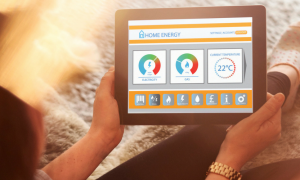Coldwell Banker Real Estate LLCJanuary 2016
For PDF copy: View Coldwell Banker Smart-Home Marketplace Survey
The year 2020 has long been a benchmark for when the smart home will finally be mainstream, but according to the results of the Smart Home Marketplace Survey from Coldwell Banker Real Estate, that time may come sooner than we originally thought. The survey polled more than 4,000 U.S. adults in advance of CES 2016, revealing that homeowners are willing to pay extra to “smart stage” their home as well as what Americans think when they hear “smart home.”
The smart home is going mainstream fast – and the technology is addicting.
- • Almost half (45 percent) of all Americans either own smart home technology or plan to invest in it in 2016.
- • Of people who do not currently have smart home technology, more than one in four (27 percent) say they will incorporate it into their lives in 2016.
- • Of people who either have smart home technology or plan to buy it in 2016, more than one in three (36 percent) don’t consider themselves early adopters of technology.
- • Seventy (70) percent of people with smart home technology said buying their first smart home product made them more likely to buy another one.
Can smart home technology help you sell your home faster?
- • More than half of homeowners (54 percent) would purchase or install smart home products if they were selling their home and knew that doing so would make it sell faster.
- • Of homeowners who said they’d purchase or install smart home products, 65 percent would pay $1,500 or more and 40 percent would pay $3,000 or more to make their home smart.
- • Of Millennial homeowners (ages 18 to 34) who would purchase or install smart home products, 72 percent would pay $1,500 or more and 44 percent would pay $3,000 or more to make their home smart.
Most Americans think a home can be considered “smart” if it has smart security, temperature, lighting and safety.
- • When asked about what needs to be in a home for it to be considered “smart,” the top choices were security (e.g., locks and alarm systems – 63 percent), temperature (e.g., thermostats and fans – 63 percent), lighting (e.g., light bulbs and lighting systems – 58 percent) and safety (e.g., fire / carbon monoxide detectors and nightlights – 56 percent).
- • More than three-quarters (76 percent) of Americans think that having just one category of smart technology in your home isn’t enough for it to be considered smart.
- • Sixty (60) percent of Americans think that a home needs to have at least three categories of smart products for it to be considered smart.
Entertainment is the entry-way for smart home technology.
- • The most popular type of smart home technology that people already own is smart entertainment, such as smart TVs and speaker systems; 44 percent of people with smart home technology own a smart entertainment product.
- • The next most popular types of smart home technology that people currently have installed in their home include smart security (31 percent) and smart temperature (30 percent).
Smart home technology is no longer just for the young, affluent and educated.
- • Older generations are adopting certain types of smart home technology faster than younger ones. For instance, 40 percent of those over 65 who own smart home products currently have smart temperature products, compared to only 25 percent of Millennials (ages 18 to 34).
- • Americans with a household income of $50k to $75k and those with a household income of $75k to $100k are adopting smart home technology at nearly identical paces: 25 percent adoption for those in the $50k to $75k range and 26 percent adoption for those in the $75k to $100k cohort.
- • The same is true for people with only some college education and people who graduated from college: 26 percent versus 27 percent.
Home buyers are most attracted to smart security and temperature.
- • When asked about the types of pre-installed smart home technology that would be most appealing if they were buying a home, most Americans said smart security (58 percent) and temperature (56 percent).
- • The least popular types of smart home technology to home buyers are smart appliances (e.g., smart refrigerators, washers and dryers – 34 percent) and entertainment (29 percent).
Who owns smart home technology in America?
- • Of respondents who said they currently have smart home products, 57 percent were male and 43 percent were female.
- • Forty-three (43) percent of Americans with smart home products are Millennials, 33 percent are ages 35-54 and 24 percent are 55 and older.
- • More than two out of every five smart home technology adopters (44 percent) are parents with children under 18 years old.
Full Methodology
This survey was conducted online within the United States between October 22-26, 2015 by Harris Poll on behalf of the Coldwell Banker brand via its Quick Query omnibus product. The survey was conducted among 4,065 adults (ages 18 and over) among whom 1,009 own at least one smart home product. For the purposes of the survey, “smart home technology/products” were defined as products or tools that aid in controlling a home’s functions such as lighting, temperature, security, safety, and entertainment, either remotely by a phone, tablet, computer or with a separate automatic system within the home itself. Figures for age, sex, race/ethnicity, education, region and household income were weighted where necessary to bring them into line with their actual proportions in the population. Propensity score weighting was used to adjust for respondents’ propensity to be online.
All sample surveys and polls, whether or not they use probability sampling, are subject to multiple sources of error which are most often not possible to quantify or estimate, including sampling error, coverage error, error associated with nonresponse, error associated with question wording and response options, and post-survey weighting and adjustments. Therefore, the words “margin of error” are avoided as they are misleading. All that can be calculated are different possible sampling errors with different probabilities for pure, unweighted, random samples with 100% response rates. These are only theoretical because no published polls come close to this ideal.
Respondents for this survey were selected from among those who have agreed to participate in our surveys. The data has been weighted to reflect the composition of the adult population. Because the sample is based on those who agreed to participate in our panel, no estimates of theoretical sampling error can be calculated.






